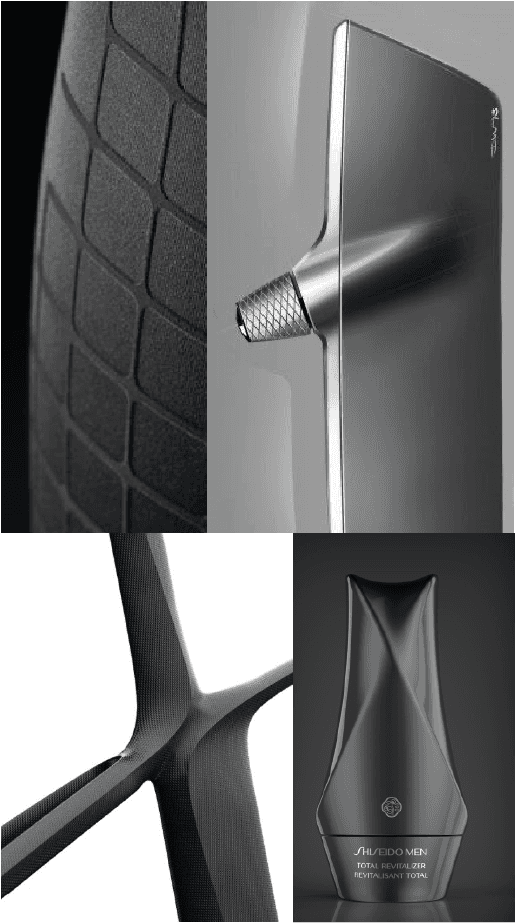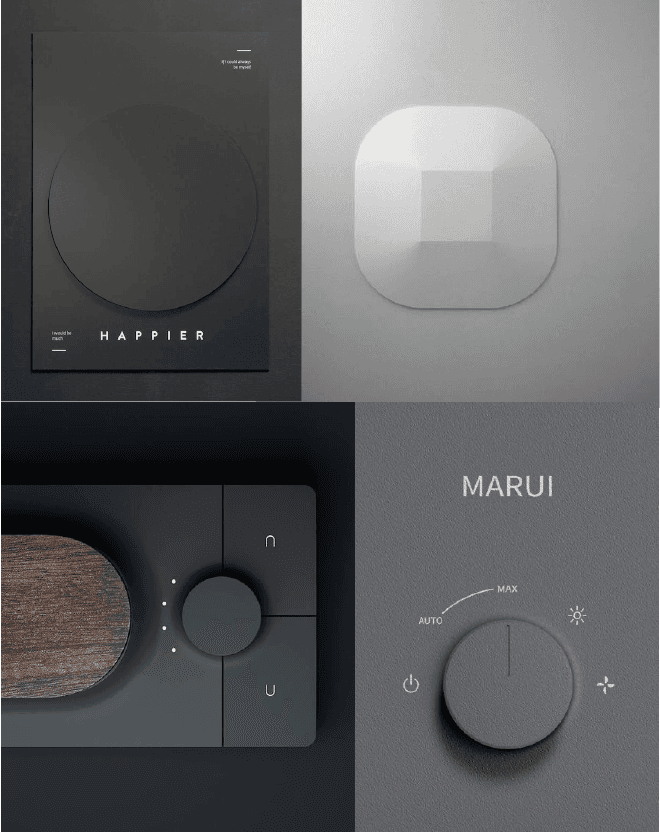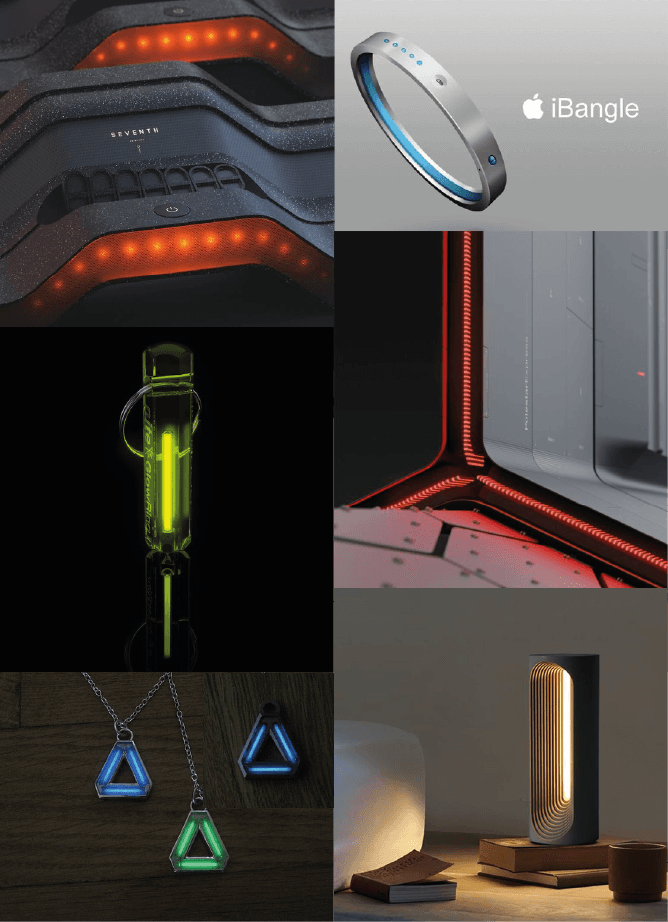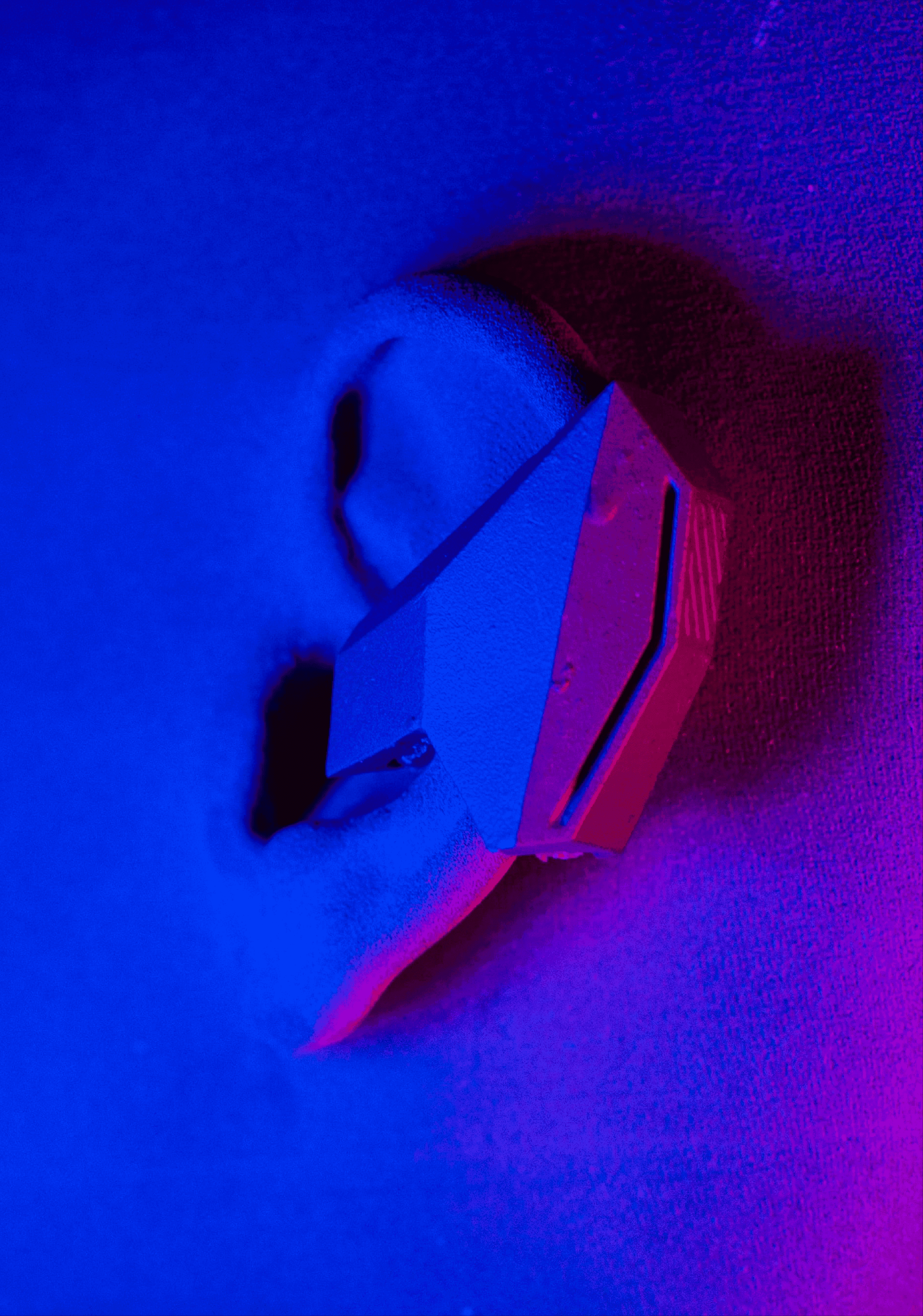Headphones Designed for AR Smart Contacts — Phonic AR delivers a groundbreaking audio experience tailored for AR contacts or glasses. These sleek, open-ear headphones provide immersive 3D sound and integrate effortlessly with AR devices. Compact and comfortable, they rest on the outer ear, offering easy communication and enhanced audio for everyday use.
Project Type
Product Design
Headphone Design
Skills
Visual Identity Design
Information Architecture
Usability Testing
User Interface Design
Prototyping
Physical Product
Mentors
Sandra Kaufmann
Collaboration
ZHdK University
Duration
2 weeks
Collaborative Project with
My Role
Concept Development
Prototyping
Project Management
Design a concept to final execution. My role encompassed creating the concept, overseeing prototyping, shaping the visual identity, and managing the project to deliver a user-centered, innovative audio solution for AR smart contacts.
Main Challenge
To create an innovative headset concept for Poly, envisioning future technologies that could become reality in the next 5-10 years. The design explores advanced integrations, pushing the boundaries of what audio wearables can achieve in the near future.
Users
Our target users are tech-savvy creatives looking for innovative audio experiences that integrate seamlessly with AR, prioritizing comfort, intuitive controls, and hands-free interaction for both digital and real-world use.
Our Solution
Phonic AR is a compact, all-day wearable earbud that uses sound-beaming technology for 3D-directed audio from a discreet speaker on the outer ear. Built with a hard shell and soft, moldable interior for comfort, it functions hands-free as both a communication tool and earbud, with potential integration with in-eye devices for seamless control.
Research
Persona
Our research for “Phonic AR” focused on integrating advanced audio technology with AR smart contacts and glasses.
Market and Competitive Analysis
We analyzed the audio device landscape and found a lack of products that seamlessly integrate with AR smart contacts, offering intuitive controls, comfort, and immersive sound. Phonic AR fills this gap by blending style, functionality, and innovative technology to meet future needs.
Key Findings
• Limited Market for AR Audio Integration: Few competitors provide an audio solution specifically designed for AR smart contacts.
• User Demand for Hands-Free, Immersive Sound: There is a high demand for audio devices that offer hands-free operation and 3D sound experiences.
• Lack of Comfort and Long-Term Use Options: Existing products often lack ergonomic designs that cater to extended daily use.
Understanding User Needs
We identified tech-savvy creatives as our primary users—individuals who value innovative audio experiences that enhance both digital and real-world interactions. Our personas highlight users who seek devices that are not only functional and intuitive but also stylish and suitable for daily, long-term use.
Key Findings
• Seamless Integration with AR Technology: Users want headphones that can easily integrate with AR glasses or contacts, allowing for uninterrupted interaction.
• Enhanced Comfort for All-Day Wear: The need for a comfortable, compact design that doesn’t compromise on style.
• Intuitive and Minimal Controls: Users prioritize minimalistic design and easy-to-use controls to enhance their AR experiences.
Defining User Profiles
Persona
We target tech-savvy creatives seeking innovative audio experiences that seamlessly integrate with AR technology.
Lily Chen
Age
24 years old
Education
Bachelor’s in Interactive Media
Location
San Francisco, CA
Tech Literate
Advanced
Mention
“Audio should be more than just a background—it’s an experience. I want sound to flow seamlessly with my surroundings, enhancing both the digital and real worlds. With AR smart contacts, I see endless possibilities to merge sight and sound, transforming how we connect, explore, and create.”
Personality
Curious, creative, and always on the lookout for the next big innovation in tech. Lily is driven by a passion for merging the digital and physical worlds to create a more connected and interactive future.
Bio
Lily is a digital creator and AR enthusiast who loves pushing the boundaries of immersive technology. She explores the latest in AR wearables and is excited by the potential of smart contacts to revolutionize how we interact with digital content. With Phonic AR, she sees an opportunity to blend seamless audio experiences into her daily routine, from urban exploration to remote work, enhancing both productivity and creativity.
Core Needs
• Integrated Audio Experience: Seeks devices that offer seamless integration with AR smart contacts for a hands-free and dynamic audio experience.
• Comfort and Mobility: Prefers lightweight, unobtrusive wearables designed for all-day use without compromising on style or comfort.
• Intuitive Technology: Desires tech that adapts to her active lifestyle without requiring complicated setups or controls.
Frustrations
• Complicated User Interfaces: Dislikes devices that are difficult to set up or navigate.
• Inconsistent Sound Performance: Frustrated by audio solutions that don’t provide clear, reliable sound in diverse environments.
• Lack of Community Engagement: Wants a more connected community where users, creators, and tech enthusiasts can collaborate and share experiences.
Technology Exploration
To ensure Phonic AR’s cutting-edge design, we explored advanced technologies and materials that could enable 3D sound beaming, hands-free operation, and compact form factors. Our research involved studying the latest AR SDKs and prototyping with materials that balance durability, flexibility, and comfort.
Key Findings
• 3D Directed Sound Technology: For immersive and directional audio experiences that enhance AR applications.
• Kinetic Energy Charging: Utilizing head movements for sustainable, on-the-go charging without the need for frequent plug-ins.
• Cross-Platform Compatibility: Ensuring the headphones are compatible with both AR glasses and smart contacts for a versatile user experience.
Field Research and Direct Feedback
We engaged in field research by interacting with potential users and conducting hands-on prototype testing in real-world scenarios. Feedback from these sessions was crucial in refining the Phonic AR’s design, particularly in areas of comfort, sound quality, and ease of use.
• Prototyping & Testing: Iterative user testing in environments where AR technology is actively used provided insights for optimizing design and functionality.
• Feedback Implementation: Direct feedback from users helped shape adjustments in ergonomics, control interfaces, and aesthetic design for a more refined final product.
Concept Development
Information Architecture
Gesture
Visual Identity
This section explores the foundational ideas behind Phonic AR, detailing user flow sketches, AR sound architecture, and interactive light gestures. Here, you’ll discover how the design integrates intuitive user experiences, 3D sound immersion, and visual cues for seamless AR audio interaction.
Information Flow
Information Architecture
This user flow sketch demonstrates the integration of ear clips and smart contacts to control audio experiences. The flow outlines how users interact with AR smart contacts to manage 3D sound, voice commands, and device connectivity, providing an intuitive and immersive AR audio experience.
AR Sound
Information Architecture
AR sound immerses the user at the focal point of virtual multidirectional audio emanating from various directions, enhancing the perception of AR object placement. This feature is particularly impactful in virtual environments, such as gaming, where precise audio localization adds to the immersive experience.
Lights
Gesture
The lights serve as indicators for external observers to interpret signals from the headphones. "Standby" is represented by an active light, while "Digital conversation" features a pulsating light, and "Digital sound" is denoted by a scaling light.
Moodboard
The moodboard encapsulates the desired essence for the earphone: an accessory with minimal design, waterproof features, a sharp texture for light & shadow play, a genderless, and haptic buttons with sensory light feedback.
Earphone Design
Ideation Process
Physical Prototyping
Product Design
The Phonic AR earphones feature a sleek, minimalist design prioritizing comfort, portability, and intuitive controls. With a compact, ergonomic shape, subtle textures, and ambient lighting, they offer a futuristic, gender-neutral style that blends aesthetics with functionality.
Ideation
In the ideation phase, the goal is to craft a design that embodies jewelry aesthetics while embracing the open-ear concept. This approach, contrary to noise cancellation, ensures safety in AR earphones, allowing users to remain aware of their surroundings. The primary objective is to seamlessly blend the physical and digital realms.
Evolution of Process
Physical Prototyping
Usability Testing
User Interface Design
In the ideation phase, the goal is to craft a jewelry-inspired design for the outer ear. The earbud, designed for lasting comfort in day-long wear, consists of two pieces: a custom-molded earpiece for optimal comfort and a titanium body.
Perspectives
Preview individual components from various perspectives and explore potential color options. The earmold is crafted through 3D printing, while the metallic body takes shape from a titanium two-part mold.


















